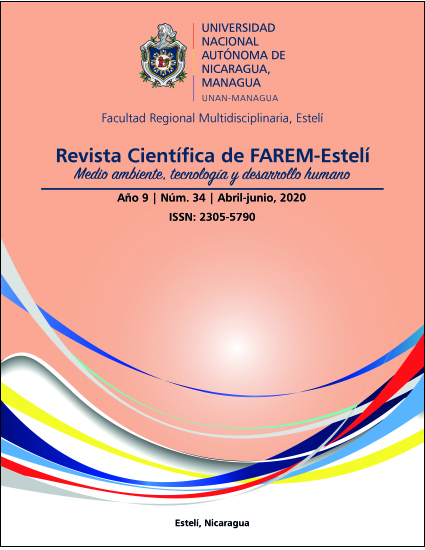Structure of bat communities as habitat bio-indicators in the Biological Reserve Indio Maiz
DOI:
https://doi.org/10.5377/farem.v0i34.10015Keywords:
Chiropter, environmental disturbance, agroecosystem stability, biodiversityAbstract
Bats are indispensable for the pollination of crops, the control of insects and of agricultural and human pests that can be zoonotic vectors. However, the status of the communities and their biological structure in the Indio Maíz Reserve, which in turn function as bioindicators of agroecosystem conservation, is unknown. For this purpose, the agroecosystems of the reserve were characterized. Fog nets were used to capture specimens recording weight, size, and sexual status. They were taxonomically identified by agroecosystem. The comparison between these is the result of the biodiversity and similarity indices. 384 individuals and 45 species distributed in eight families and ten subfamilies were captured. 71% of all individuals are in good health. The Shannon rain forest index was the highest of all agroecosystems. The Filostomidos subfamily was more representative in terms of species. This family appears with the most representativeness in terms of species that are distributed equally. This agrees with other studies carried out on the Phylostomid family since these groups of animals are more intolerant to habitat disturbance.

